Fractional laser resurfacing is a know-how in cosmetology. The procedure appeared quite recently, but it has already proven positive. It is used by anyone who wants to rejuvenate the skin of the face, neck, hands. It has many indications and few contraindications.
This type of rejuvenation allows you to smooth the skin, remove scars and scars, and even out the tone. The procedure takes a few minutes and the effect lasts up to five years. Isn't that what many women dream of: visiting a salon and staying beautiful for a long time? In any case, before signing up for a session, you should consult a doctor, as side effects are possible.
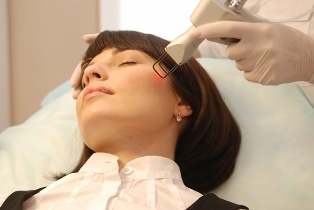
The essence of fractional laser resurfacing
One of the latest modern developments in the field of cosmetology is the fractional laser resurfacing technique. Currently, not without reason it can be called the most popular of all laser therapy procedures.
During the session, the laser beam, which passes through a special fractional grating, breaks into a large number of microbeams. This method provides a spot (fractional) effect on the skin without completely destroying it.
In the dermis layer, many of the smaller areas of scarring are formed, where the development of renewed young skin tissue occurs very rapidly. The cells around the affected areas begin to divide intensely, filling in the damaged areas. As a result, rejuvenation processes in the deep layers of the dermis are stimulated. The micro-rays, which act on the middle and upper layers of skin tissue, help to eliminate pigmentation, wrinkles and scars.
Fractional laser resurfacing of facial skin helps it to gain firmness and elasticity. In addition, thanks to the procedure, pores are significantly reduced, the oval of the face becomes more toned, the tone and texture of the skin are smoothed, wrinkles and scars are significantly smoothed.
4 types of fractional laser resurfacing
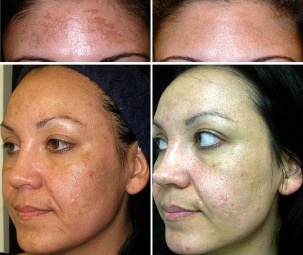
Fractional non-ablative laser resurfacing
In the photo on the right you can see the result after resurfacing with a fractional laser of the non-ablative type.
As a general rule, the method is used to rejuvenate the neck, face, eyelids, as well as to remove stretch marks, traces of acne.
With this photothermolysis, the skin is not subject to serious damage. Therefore, this method is used for lifting procedures and improving the condition of the skin in general.
Photothermolysis involves the use of an erbium laser, which penetrates the epidermis layer without damaging its integrity.
In addition, a thulium laser (1. 93 Nm) is often used. Thanks to the redistribution of melanin, it removes age spots more effectively and heals poorly pigmented areas.
The result of the non-ablative photothermolysis technique is prolonged. For example, after four acne treatments, there is an improvement in skin condition within two years. If the goal of photothermolysis is to remove stretch marks, then the result exceeds expectations: at the end of the course, not only does the defect disappear, but also local tissues gain elasticity.
After the procedure, wrinkles diminish for another three months. However, side effects are only reported in 5% of cases.
Ablative form
The technique involves the use of a CO2 laser, whose rays, penetrating into certain layers of the dermis, form areas of damage there. During this process, in the superficial layers of the skin, the proteins fold and are destroyed. Renewed collagen is formed in the treated areas for three months after the procedure.
This method is used for deep wrinkles, scars, excessive pigmentation, scar tissue, and sagging skin.
A CO2 laser has a large radiation wavelength, thanks to which it is able to penetrate the deep layers of the dermis and eliminate important defects.
In addition, a shorter wavelength erbium laser is used. Its effect is superficial, but the result becomes visible before.
Unlike nonablative thermolysis, patients often experience pain during and immediately after the ablative session. But at the same time, this method is more effective and safe compared to classical laser ablation.
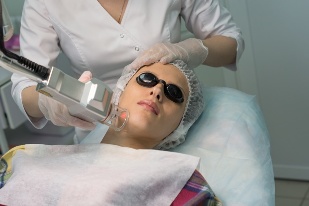
CO2 rejuvenation
The photo shows a variation of the fractional laser resurfacing procedure. It assumes the use of a CO2 laser with a wavelength of 10. 6 microns. The beam promptly eliminates cells with a defect within the epidermis layer. As a result of radiation to the tissues, intense heating of the fluid occurs. With CO2 fractionated laser resurfacing, the evaporation of water causes the breakdown of the structure of some areas, while the surrounding skin maintains its integrity.
With this method, damaged areas are restored thanks to live and active cells around.
DOT rejuvenation method
This method uses a carbon dioxide laser with a wavelength of 10. 6 μm. Falling into the layers of the epidermis, the beam selectively removes defective cells. With the alternation of damaged and healthy areas, a specific mesh should be formed. As a result of the coagulation of the protein by the laser beam, unwanted cells are destroyed.
Benefits of fractional laser resurfacing
This technology has been used in the field of cosmetology for over 10 years. It is effective, safe and has a number of benefits compared to other healing and anti-aging therapies:
causes almost no side effects;
is non-invasive, so there is no possibility of infection from the client (including HIV);
is painless and comfortable enough;
allowed from 16 years;
is hygienic as the tools do not come into contact with the skin;
is suitable for atonic skin types;
it is possible to select an individual treatment program;
suits clients with any degree of skin pigmentation;
areas with defects are processed promptly, therefore the possibility of damage to surrounding healthy tissue is excluded;
due to the fact that the skin is only 25% injured, the recovery period after the procedure is short (face - seven days, body - 14 days);
the effect becomes visible immediately after the first procedure;
the result obtained is saved for several years;
it is possible to manipulate delicate places;
elastin production is significantly accelerated in affected areas.
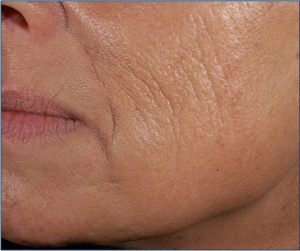
Indications for the rejuvenation procedure
Fractional laser resurfacing can be used for:
general skin rejuvenation;
skin lift (face, neck, cleavage, arms);
scars and scar smoothing;
skin alignment;
restoring the outline of the facial oval;
wrinkle removal;
remove age spots and melasma;
remove stretch marks (stretch marks);
elimination of the consequences of acne.
Intense fractional laser exposure can cause hyperpigmentation of the skin for a short period.
To obtain a good result, after the procedure, the skin should be treated with sunscreen cosmetics with a protection level of at least SPF 50.
Fractional rejuvenation can be compared to solid rejuvenation in its effect. Judging by the vast domestic and foreign experience, this hardware technique is less traumatic and produces a tremendous rejuvenating and tightening effect.
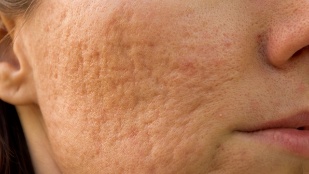
Fractional rejuvenation for the treatment of scars and stretch marks
This rejuvenation method is especially effective in treating scar tissue. Fractional lasers have the ability to crush thick scar tissue, after which it acquires elasticity, smoothness, and the tension of the surrounding healthy tissue decreases.
Fractional photothermolysis helps to reduce the area of scars, making them elastic, discreet and looking as close to healthy skin as possible.
Fractional rejuvenation is indicated for the treatment of stretch marks. Unfortunately stretch marks cannot be completely removed, you can only make them more invisible.
The effect of a fractional healing is:
decreasing the area of the stretch marks;
reducing fabric fiber breaks;
aligns stretch marks with healthy skin tone;
increasing the elasticity and firmness of the surrounding skin tissue and relieving tension.
Contraindications of such rejuvenation
Fractional rejuvenation, like any cosmetic procedure, is not shown to everyone. Therefore, in order to avoid negative consequences, it is necessary to carefully study all contraindications before the session.
Fractional photothermolysis is not recommended:
during pregnancy and lactation, since any change that occurs in the body of a pregnant or lactating woman affects the baby, it should not put the baby's health at risk, it is better to postpone the procedure;
in case of inflammation (or redness) in the treated area: the cosmetologist will refuse to perform fractional laser photothermolysis on the cheeks if they are covered with an allergic rash (the laser beam can damage the skin to deep scars);
for chemical peel: if you have cleansed your face, you need to let the epidermis layers strengthen for two weeks (minimum) and prepare for the laser beam;
in the presence of oncological diseases, since as a result of laser exposure, natural complications can occur;
for diagnosed diabetes mellitus;
in the presence of viral and bacterial infections: To avoid the invasion of foreign elements into the cell structure during fractional rejuvenation, you must first fully recover.
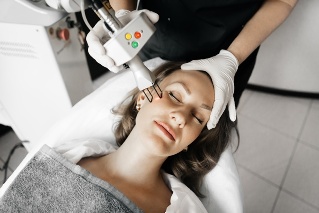
Procedure setup and flow
To avoid disastrous consequences in the form of complications after a cosmetic procedure, you should carefully prepare for it.
First, you need to consult with a beautician and get an assessment of the condition of the facial skin. The specialist will determine the list of contraindications and give the necessary recommendations.
Before the procedure, it is not recommended to visit the bathhouse, sauna, solarium for 3-4 weeks. It is also forbidden to sunbathe in the sun. Sunscreen should be applied to the face before going out.
It is very important to stop certain medications, particularly antibiotics and anticoagulants. Also, doctors recommend taking anti-herpetic drugs.
It is not recommended to carry out manipulations that damage the skin tissue no later than two weeks before.
Fractional laser resurfacing of the eyes and other areas is carried out in several stages. First, the esthetician must prepare the skin areas for the procedure. To do this, it removes the remains of decorative cosmetics from the skin, as well as dirt, dust and sweat. The surface is then treated with an antiseptic.
The next step is to apply an anesthetic cream, which is left on the skin for about an hour.
After anesthesia, a contact gel is applied evenly to the face so that the sensor glides smoothly and evenly over the surface of the skin.
Then the tip is used to treat the skin tissue in straight lines in various directions. The device is equipped with accessories of different sizes. As a general rule, 2 cm² of leather is processed in one pass.
At the end of the procedure, the specialist should remove the remaining contact gel and apply a soothing cream.
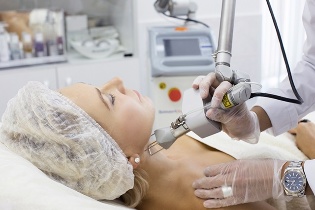
Number of sessions
After fractional laser resurfacing of the eyelids and other problem areas, rehabilitation is required for 3-7 days. The length of the rehabilitation period will depend on the lifestyle of the patient. For example, bad habits, poor nutrition, excessive physical activity, stress, and disturbed sleep can significantly slow down skin regeneration after the procedure.
During the first three days after the session, redness and slight swelling of the skin may appear. Pain relievers and cooling skin products can be used to reduce discomfort.
It is considered normal if during the first week the skin appears taut and peeling in places. Side effects include a tanned complexion that disappears after 14 days.
Lasting results can be achieved with two to five procedures. Specifically, the cosmetologist can tell how many sessions are needed, based on each individual case and the client's initial data.
The interval between sessions should be at least 3-4 weeks. Fractional laser resurfacing slows down aging: wrinkles diminish or disappear completely, turgor increases, pores are narrowed and the complexion is leveled. This method effectively removes pigmentation, acne, stretch marks, and scars.
Possible side effects
Complications after fractional laser resurfacing are extremely rare. Most often, negative consequences are observed due to the unprofessional actions of a cosmetologist who neglects the processing instructions. Sometimes side effects appear due to the client not following the recommendations for skin care.
Most likely complications:
pronounced cutaneous hyperemia, self-limited after three days;
bloat;
dark skin tone;
excessive dryness and flaking of the skin;
burn;
scars and scars;
white or yellow milia rising above the surface (dense nodules that form under the skin);
inflammatory processes in damaged areas;
the phenomenon of hyperpigmentation (may appear as a result of exposure to sunlight).
Complications after fractional laser resurfacing will not appear if you prepare well before the procedure, choose a reliable clinic and an experienced professional.
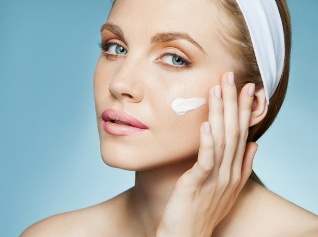
7 tips for aftercare
To quickly restore the skin, you should follow the following recommendations:
Within 7-10 days, try not to overheat the treated areas. You can't go to the bathhouse, sauna. It is not recommended to visit the solarium for 1. 5 months.
Products prescribed by the esthetician must be applied to the skin.
If the body has been treated, wear compression garments.
Treat skin with moisturizers at least 2-3 times a day.
Take a course in regenerating masks that contain a stimulant of tissue regeneration.
Appeared scabs cannot be removed.
It is forbidden to peel, use exfoliants, aggressive cleansers.
Fractional price of laser resurfacing
The price of fractional laser facial skin rejuvenation will depend on the area of the treatment areas, the depth of penetration of the rays. Some cosmetic clinics offer their clients price lists, which indicate the processing cost of 1 cm².
The cost depends on the number of sessions performed.
The best result can be achieved if the treatment is carried out in courses calculated by a professional esthetician.

Frequently asked questions about fractional laser resurfacing
Minimum age allowed for laser facial rejuvenation
There are practically no restrictions. Treatments can be done from the age of 17 to get rid of acne scars.
For women over 40 years of age who wish to preserve youth and attractiveness, the technique is especially useful, as lasers trigger collagen production by skin cells.
The recovery period after fractional laser resurfacing is typically 7-14 days. The duration of the rehabilitation depends on the complexity of the problem and the type of laser exposure.
When can I start?
It depends on the type of laser treatment used, the area of problem areas, the experience and skills of the cosmetologist. The payback period, depending on the method and complexity of the defects, ranges from two days to three weeks. It happens that the patient can start working one day after the session.
How long does it take to see the result?
It takes about six months for the skin to completely renew itself and become visible. The result lasts about five years.
Fractional laser skin resurfacing refers to highly effective cosmetic procedures. It has many advantages over similar anti-aging treatments. But you should know that this procedure is not suitable for everyone and has contraindications. Therefore, you must first consult with a specialist. And to reduce the risk of complications, you should choose only trusted and proven clinics.











